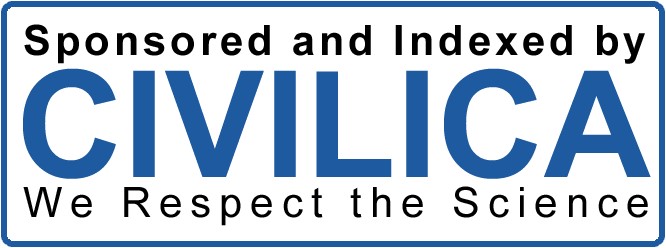The Impact of Iran’s Political Developments on the Formation and Dissolution of the National Resistance Movement
Keywords:
National Resistance Movement, nationalist parties, Mossadegh, contemporary historyAbstract
Following the August 19, 1953 coup d’état and the fall of Dr. Mohammad Mossadegh’s national government, Iran's political sphere entered a period marked by intense repression and severe restrictions on party activity and nationalist movements. With the shutdown of the National Front of Iran and the establishment of SAVAK, the space for political engagement drastically shrank, and nationalist parties were effectively stripped of the ability to participate publicly. Under these circumstances, some nationalist leaders were arrested, while others clandestinely laid the foundation for the National Resistance Movement. This movement, through secret meetings, the printing and dissemination of statements, and efforts to mobilize nationalist and religious forces, aimed to preserve the achievements of the oil nationalization movement and to restore national governance. The National Resistance Movement sought to oppose puppet regimes and foreign domination by uniting various political and religious forces around the axis of resistance against the coup and authoritarianism. However, mounting political pressure, widespread repression, and structural transformations within the power apparatus gradually led to the dissolution of the movement and the emergence of the Second National Front. This study examines the impact of Iran’s political developments on the establishment, operation, and dissolution of the National Resistance Movement. It analyzes the role these developments played in the continuity of national struggles and the formation of subsequent political currents. Additionally, the article explores the functions of nationalist parties and their modes of interaction, while also tracing the roots of the political and social failures of this era. It demonstrates how the suppression of nationalist parties and organizations during the reign of Mohammad Reza Pahlavi paved the way for the rise of powerful opposition forces within Iranian society.
Downloads
References
Aydin, U., & Azhgaliyeva, D. (2019). Assessing Energy Security in the Caspian Region: The Geopolitical Implications for European Energy Strategy. Ideas for Developing Asia and the Pacific. https://doi.org/10.1142/9789811204210_0009
Bednar, D. J., & Reames, T. G. (2020). Recognition of and response to energy poverty in the United States. Nature Energy, 5(6), 432-439. https://doi.org/10.1038/s41560-020-0582-0
Cutler, R. M. (2003). The Caspian energy conundrum. Journal of International Affairs, 89-102.
Goldthau, A., & Youngs, R. (2023). The EU Energy Crisis and a New Geopolitics of Climate Transition. Journal of Common Market Studies, 61(1), 115-124. https://doi.org/10.1111/jcms.13539
Jafari Far, A., & Khani, M. (2021). Competition of Great Powers in the South Caucasus Region. Strategic Environmental Studies Quarterly, 5(3), 43-64.
Japaridze, T., & Roubanis, I. (2013). Tbilisi’s Relevance to Washington: What Is, Where Is, and What Can Be. American Foreign Policy Interests, 35(5), 272-282. https://doi.org/10.1080/10803920.2013.838861
Karpenko, N., & Tkach, I. (2020). Geopolitical perspectives of the triangle “Kyiv-Minsk-Nur-Sultan”, situated on the Chinese “Silk Road” under the “American umbrella”. Political Science and Security Studies Journal, 1(1), 55-60.
Meyssignac, B., Guillaume-Castel, R., Roca, R., & Niculescu, G. V. (2023). Revisiting the global energy budget dynamics with a multivariate Earth energy balance model to account for the warming pattern effect The Geopolitics of Energy in the South Caucasus and the Prospects for Regional Energy Security Cooperation. Journal of Climate, 137, 51. https://doi.org/10.1175/JCLI-D-22-0765.1
Mirashrafi, Kiani, & Shirkhani. (2018). Comparative Study of US and Russian Policies Towards Energy Security in the South CaucasusJO - Quarterly Journal of International Relations Studies. 11(43), 129-165.
Montazemi, & Soleimani. (2011). Russia and Georgia: From Interactions to Tensions. Quarterly Journal of International Relations Studies, 4(14), 117-142.
Saleh, S. S., Nasirov Khudam, E., Ibrahim, I., & Simons, G. (2021). South caucasus and a ‘New Great Game’: the communication of competition in securitised international relations. Journal of Contemporary European, 29(2), 282-294. https://doi.org/10.1080/14782804.2020.1826914
Sari, D. N., Syaharuddin, S., Handy, M. R. N., Rajiani, I., & Subiyakto, B. (2022). The Spirit of Nationalism of the Banjar People on the Proclamation of 17th May 1949. The Kalimantan Social Studies Journal, 4(1), 9-17. https://doi.org/10.20527/kss.v4i1.4970
Schmidt-Felzmann, A. (2019). Between geopolitics and market rules: the EU’s Energy interdependence with Russia. Post-Crimea Shift in EU-Russia Relations: From Fostering Interdependence to Managing Vulnerabilities.
Taheri, A., & Farhmand, B. (2015). The Role of Interaction and Confrontation between US and Russian Foreign Policies in the Development of the South Caucasus Region: A Case Study of Energy . Specialized Quarterly Journal of Political Science, 10(29), 139-181.
Yazdani, A. A., Aeinvand, H., & Bagheri Ajieh, A. (2017). The Role of America and Russia in the Geopolitical Crises of Georgia and Ukraine. World Politics, 5(4), 259-261.

Downloads
Published
Submitted
Revised
Accepted
Issue
Section
License
Copyright (c) 2025 Farhad Babaei (Author); Ali akbar Khedrizadeh (Corresponding Author); Mohammad Kalhor (Author)

This work is licensed under a Creative Commons Attribution-NonCommercial 4.0 International License.







